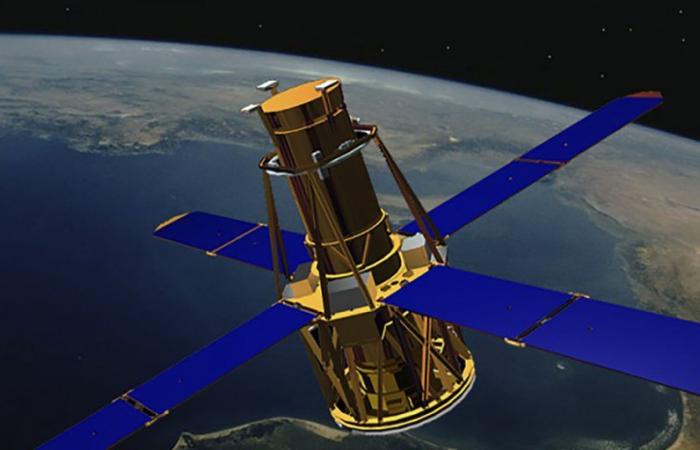In March a bizarre object, falling from the sky, tore the roof of a house in the city of Naples, Florida, in the United States. It did not cause any injuries, but it caused a great scare for the inhabitants of the house: the owner, Alejandro Otero, told the Washington Post that he received a call from his son “in a panic”, and that he quickly returned home to understand what had happened, finding “a hole in the roof and in the floor of the second floor” and “an unusual projectile – a dense and cylindrical of charred metal, slightly smaller than a soup can – stuck in a wall.” Otero said he immediately realized that it wasn’t just any object, but that it was something that “came from space.”
NASA – an acronym that stands for National Aeronautics and Space Administration, or the US aerospace agency – then confirmed that the cylindrical object was part of a load of old batteries, which left the International Space Station in March 2021. The object , which is part of the broader category of “space junk,” would normally have burned up and then disappeared upon re-entry into Earth’s atmosphere, but instead remained intact enough to puncture the roof of the Oteros, who have now asked for compensation for damage, mainly for psychological reasons, to NASA itself.
NASA has six months to decide whether to reimburse the family or open a legal case about it: in any case it is a decision that would create a precedent, given that it has never happened before that an object launched into orbit by the United States and then fell from space and caused some type of damage to US citizens.
The distinction between the country of launch of the object and the nationality of the people involved is important because in reality there is an international agreement that regulates what happens in these cases (the 1967 Outer Space Treaty), but it applies only in cases where an object launched into space by one country lands in the territory of another state. In that case, the launching state is responsible for any financial compensation that may arise from damage or cleanup costs.
In this case, however, it is an internal issue within the United States – it is a US object that damages US property – which is however being carefully observed by experts. The sharp increase in waste in space in recent years, in fact, has increased concerns about the fact that these cases may become a little more frequent in the future. Already in 2021, Professor Timiebi Aganaba, who deals with the relationship between space and society at the University of Arizona, wrote that «the current space law has worked so far because the cases were few and far between, and they were addressed in a diplomatic way . As an increasing number of objects are sent into orbit, however, the risks will inevitably increase.”
Technically, all objects that are in Earth’s orbit are always falling towards Earth. Active satellites have systems that allow them to remain in their intended orbit, and therefore to remain substantially in balance, while inactive satellites (those that stop functioning or are disabled for some reason) no longer have a way to oppose gravity, and fall until they re-enter the Earth’s atmosphere. In 2023, there were over 7,700 active satellites orbiting the Earth, and around 3,300 inactive ones.
There are mainly two things that can be done to deal with an inactive satellite. The first is to move them to a higher orbit, the so-called “graveyard orbit”, far enough from Earth that the object will take hundreds of years to reach the atmosphere. The second is to orient the satellite so that it burns up completely in the atmosphere or can still cause minimal damage upon impact with the ground.
However, it may happen that some space waste re-enters the Earth’s atmosphere in an uncontrolled manner: even in this case, it rarely survives the very high temperatures reached before reaching the ground. It happened for example in 1979, when debris from Skylab, the first US space station, fell in Western Australia without causing any damage. In 1978, however, the remains of the nuclear-powered Soviet satellite Cosmos 954 fell on northern Canada, spreading radioactive debris: it is the only case in which one country (Canada) asked to be reimbursed by another (the Soviet Union ) under the Outer Space Treaty.
“If the accident had occurred abroad and someone in another country had been harmed by the same space debris that hit the Oteros, the United States absolutely would have been required to reimburse them for the damages,” the family’s lawyer said Mica Nguyen Worthy. “Moreover, if the debris had fallen a few meters further there could have been serious or even fatal injuries.” The family requested compensation which includes the material damage caused by the hole in the roof, the costs of third-party assistance and the damages caused by the emotional and mental anguish caused by such an unexpected event.






